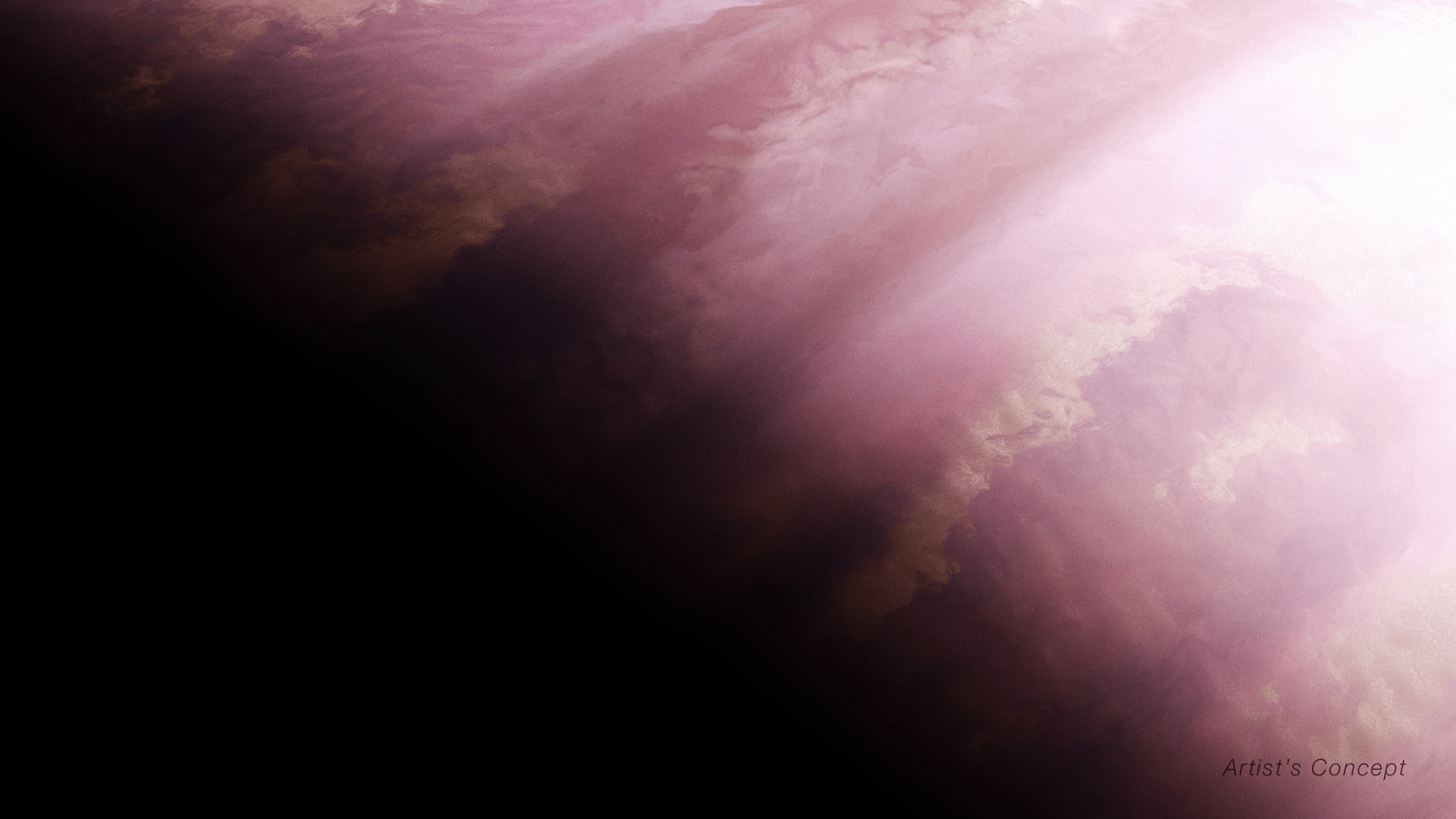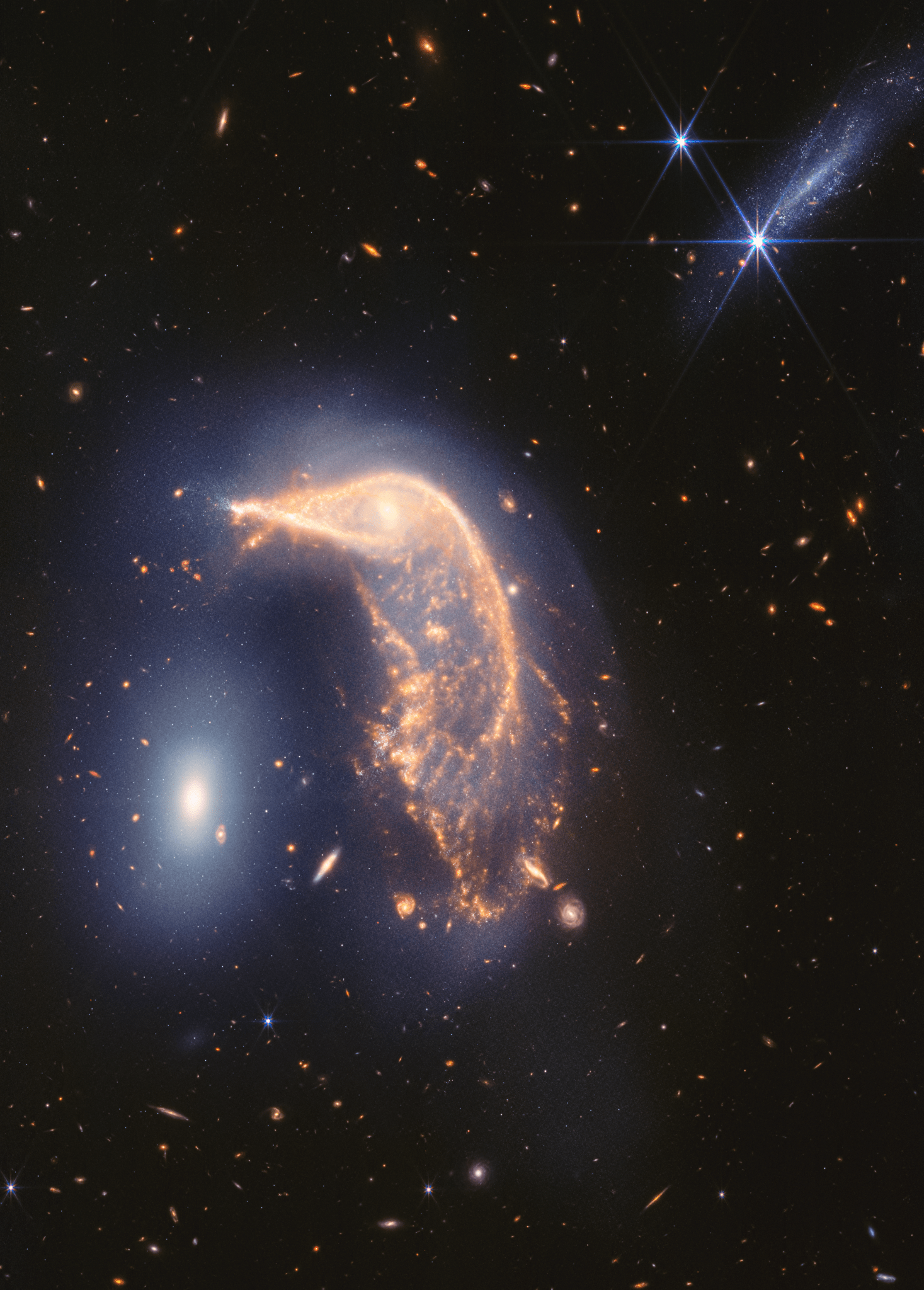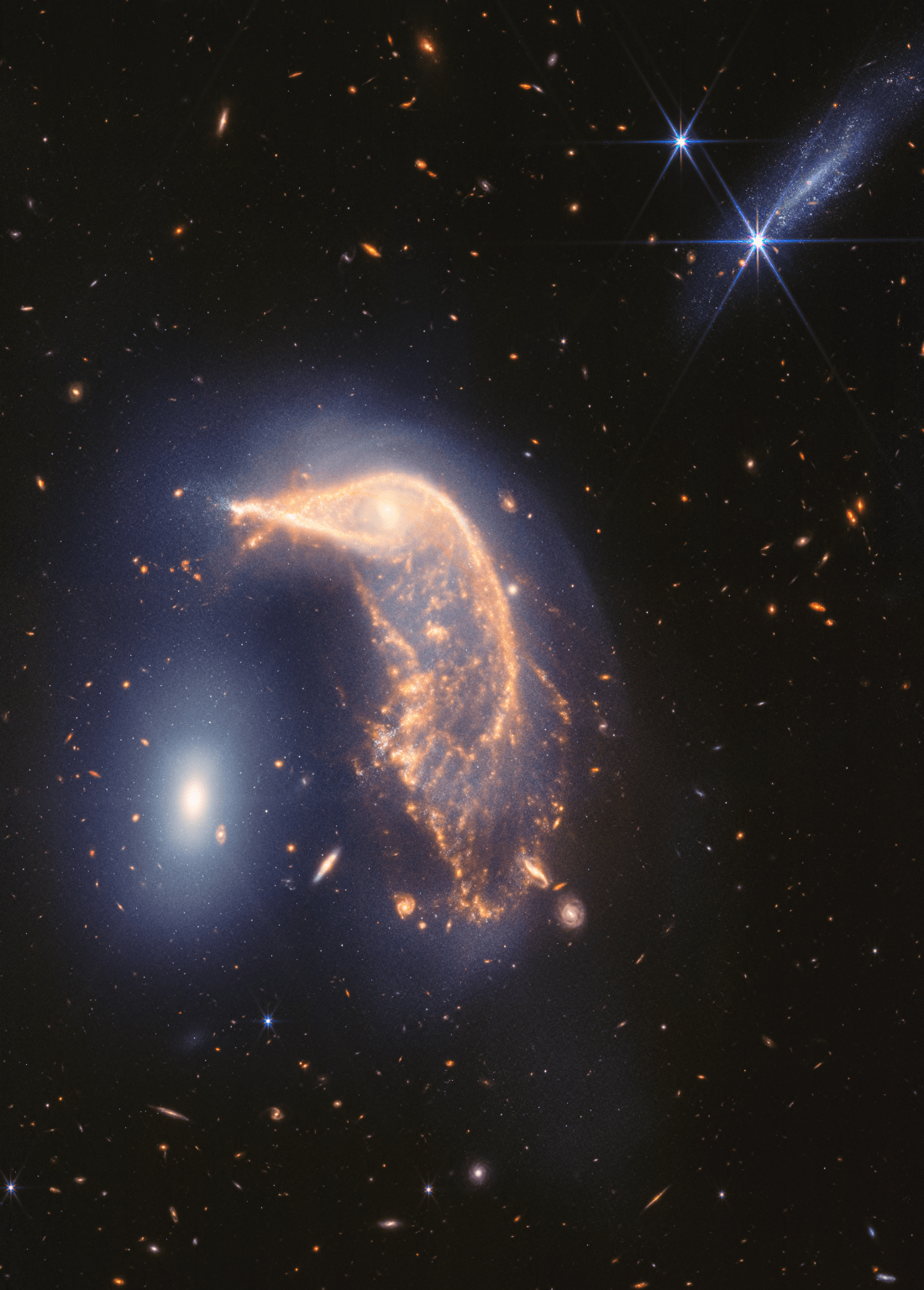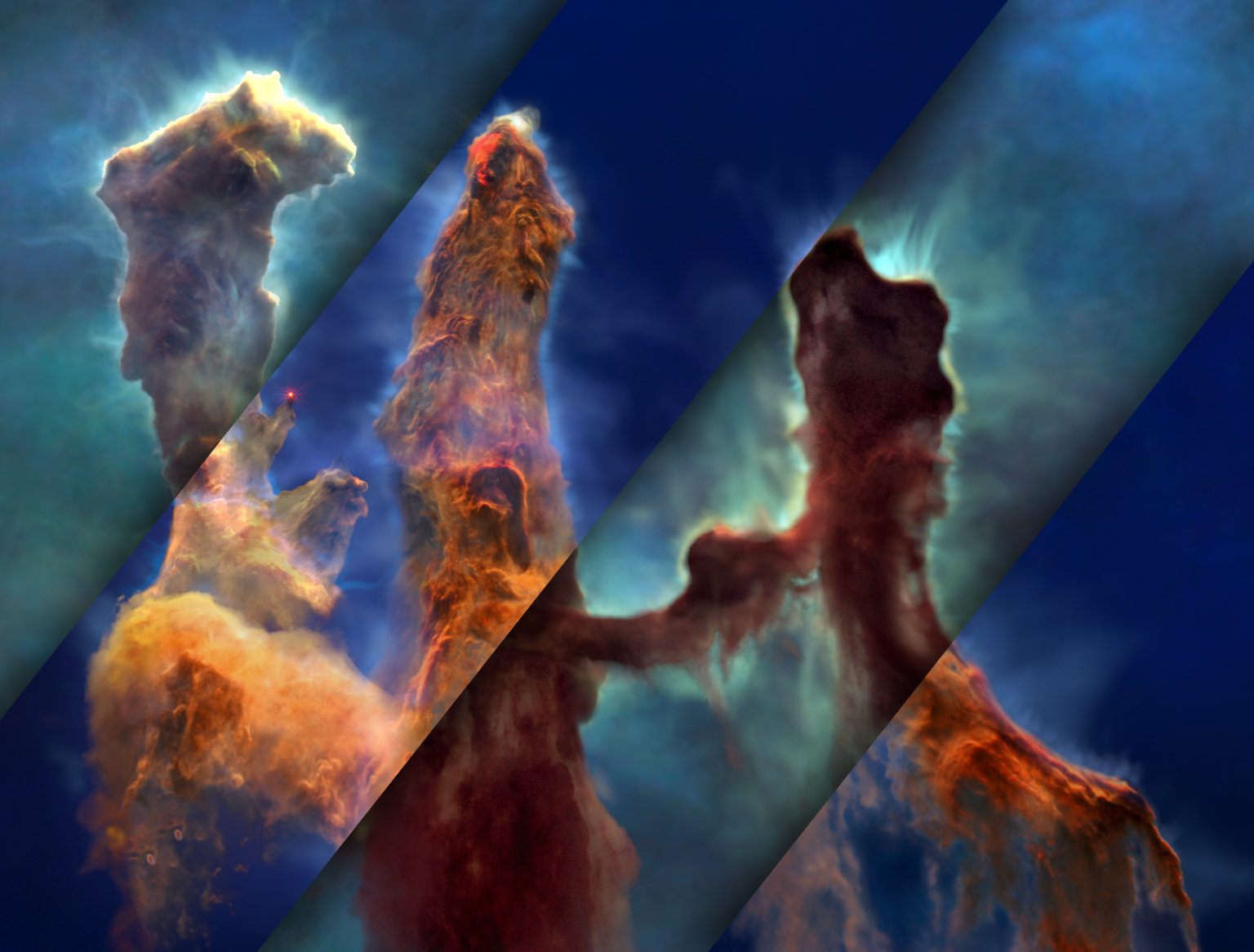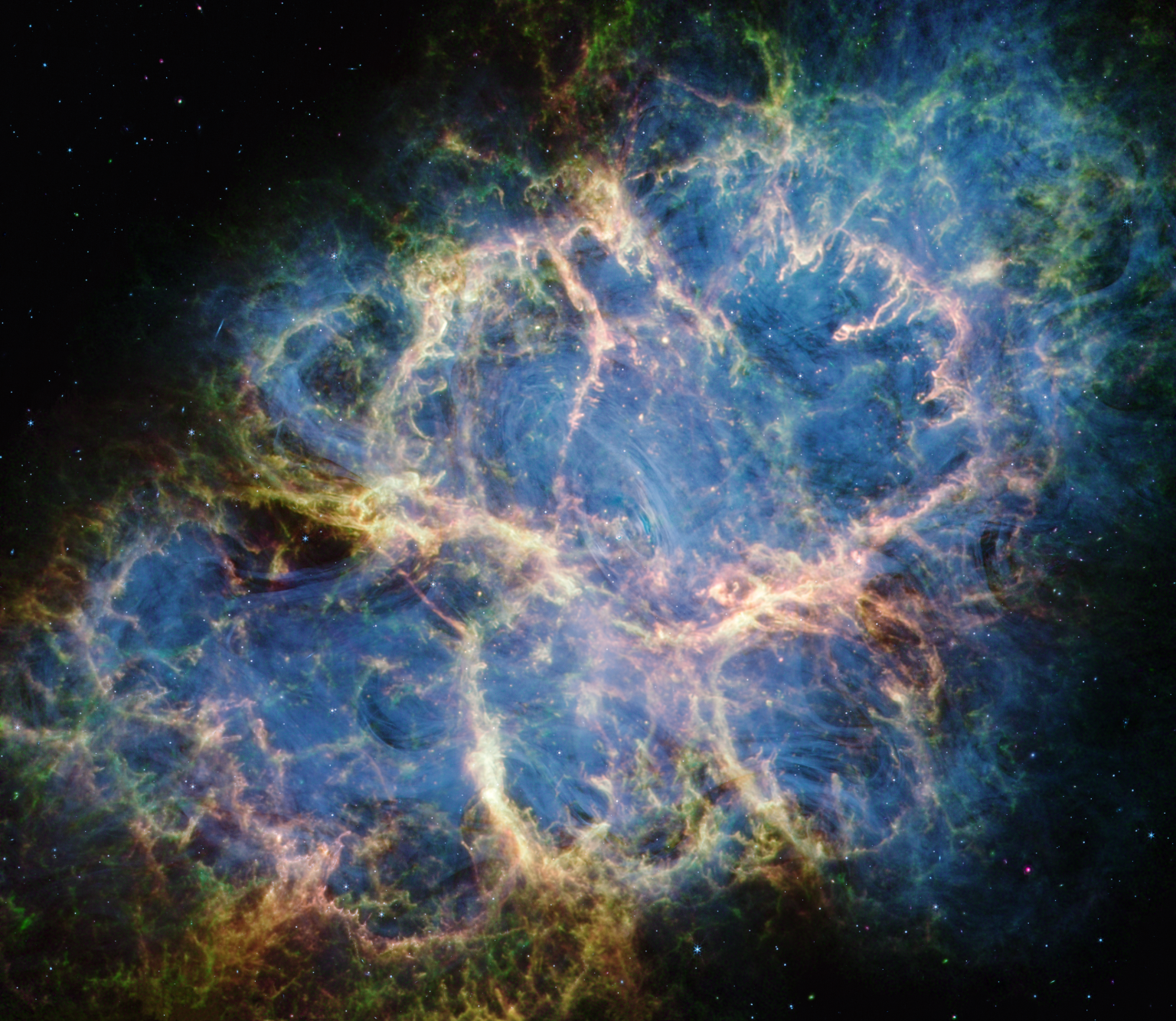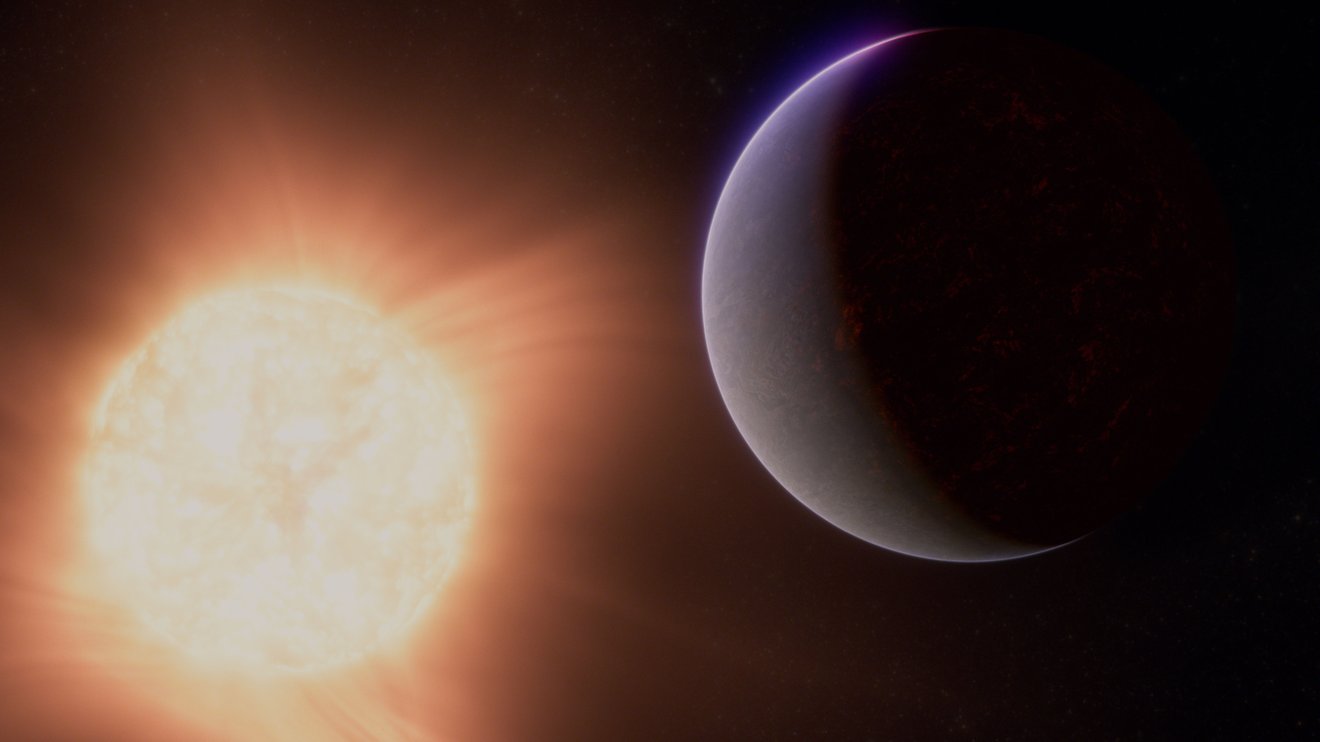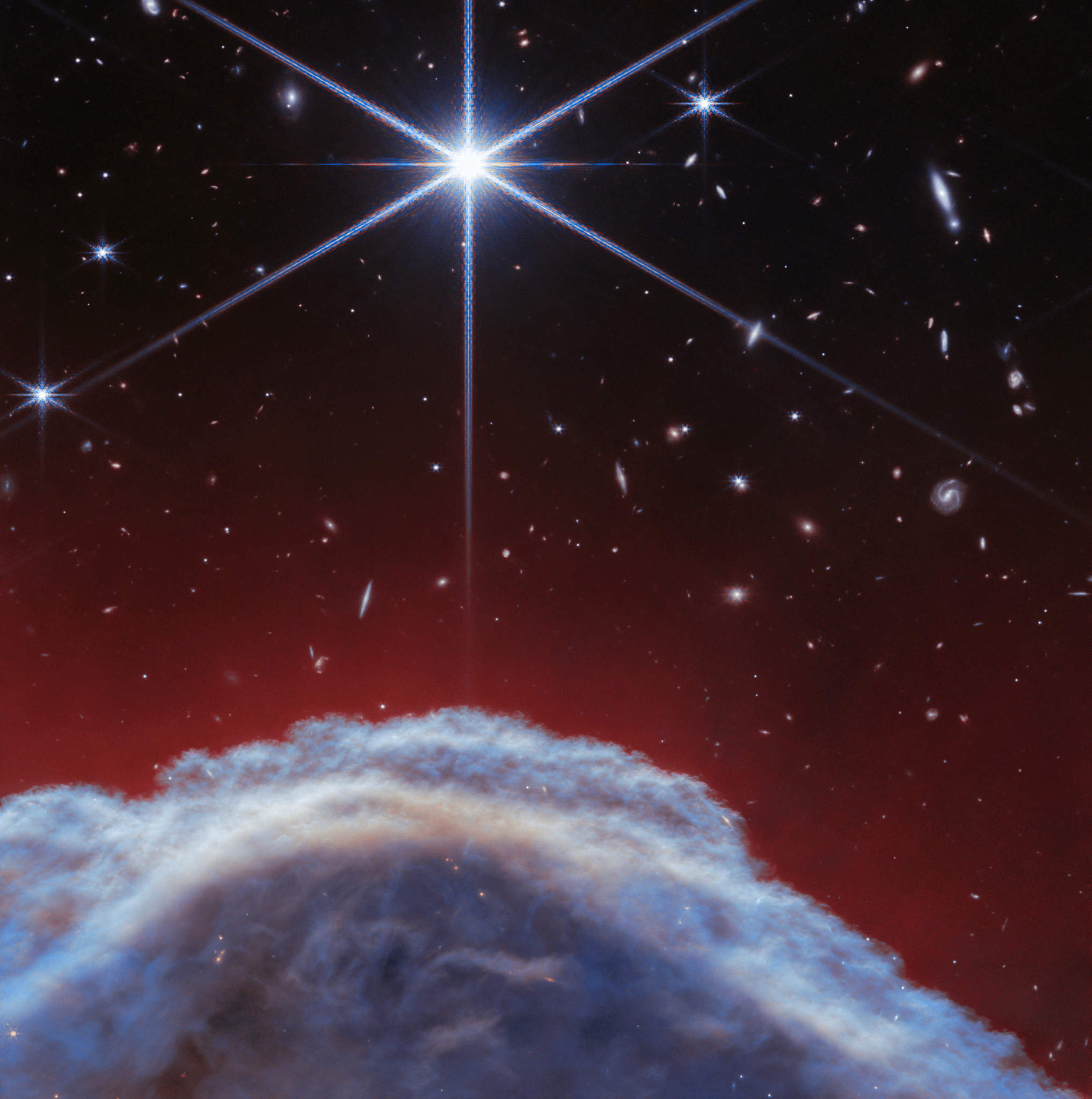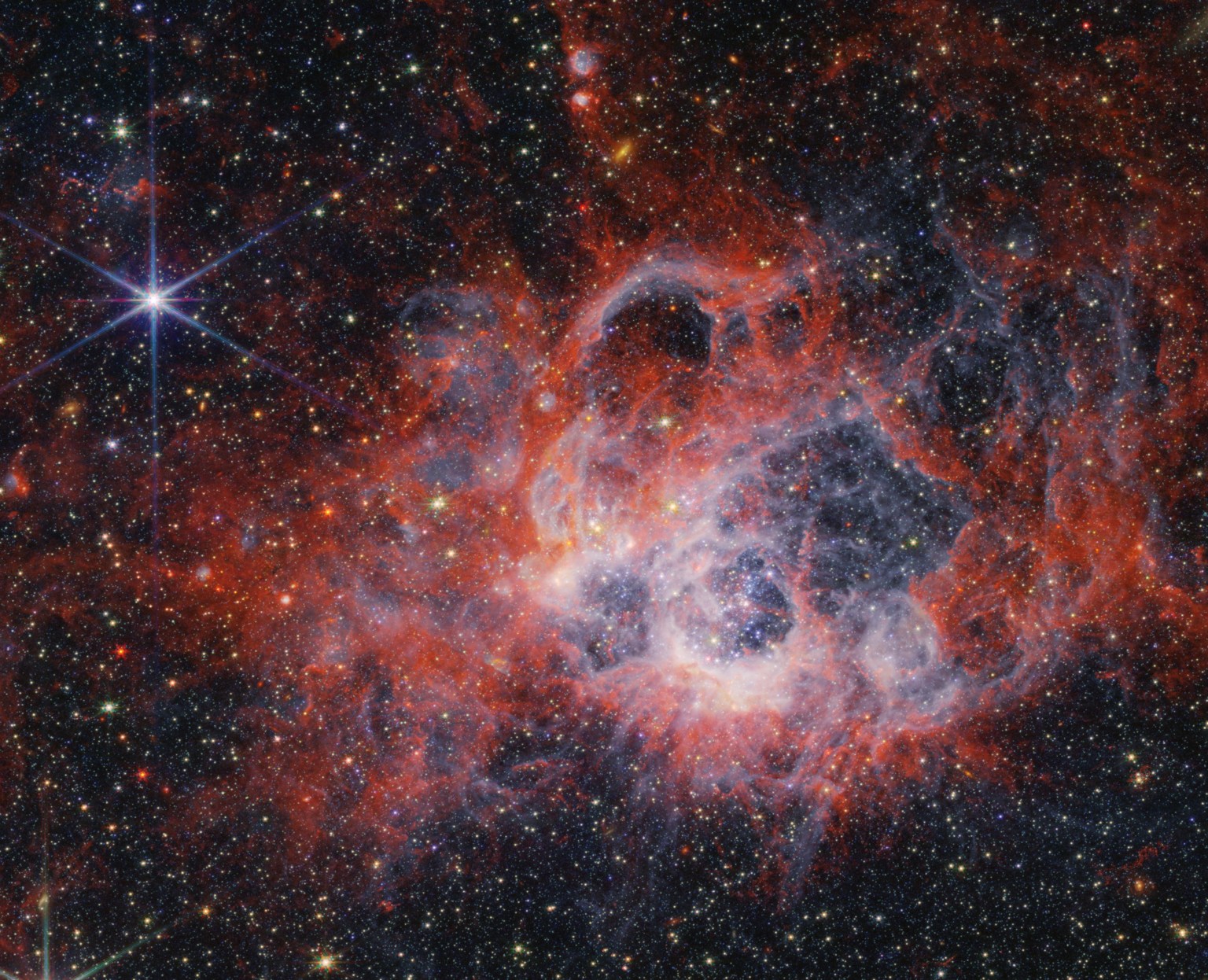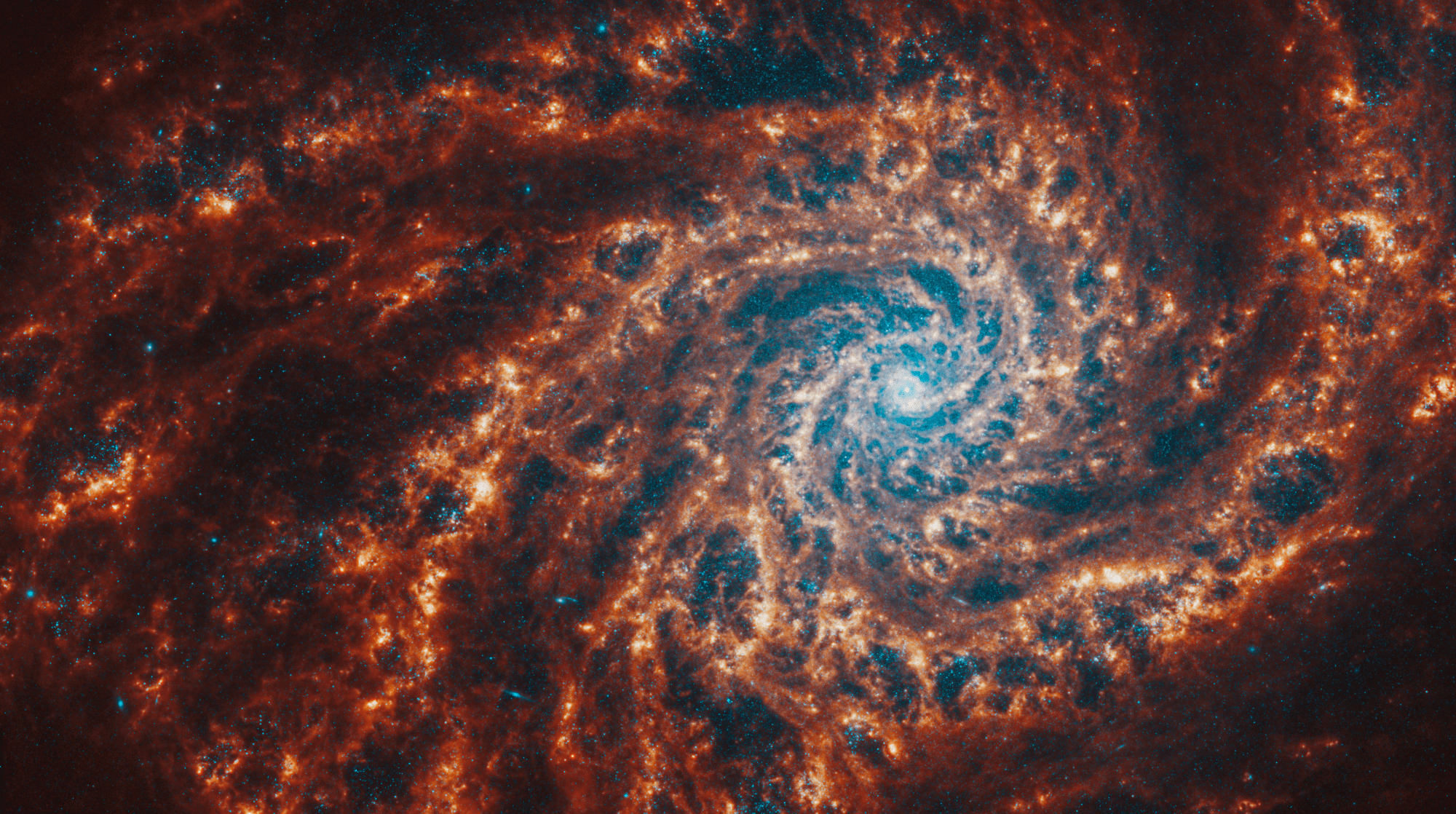6 Min Read NASA’s Webb Investigates Eternal Sunrises, Sunsets on Distant World Artists concept of WASP-39 b (full image below). Near-infrared spectral analysis of terminator confirms differences in morning and evening atmosphere Researchers using NASA’s James Webb Space Telescope have finally confirmed what models have previously predicted: An exoplanet has differences between its eternal morning and eternal evening atmosphere. WASP-39 b, a giant planet with a diameter 1.3 times greater than Jupiter, but similar mass to Saturn that orbits a star about 700 light-years away from Earth, is tidally locked…
Read MoreTag: James Webb Space Telescope (JWST)
Two Years Since Webb’s First Images: Celebrating with the Penguin and the Egg
The distorted spiral galaxy at center, the Penguin, and the compact elliptical at left, the Egg, are locked in an active embrace. This near- and mid-infrared image combines data from NASA’s James Webb Space Telescope’s NIRCam (Near-Infrared Camera) and MIRI (Mid-Infrared Instrument), and marks the telescope’s second year of science. Webb’s view shows that their interaction is marked by a glow of scattered stars represented in blue. Known jointly as Arp 142, the galaxies made their first pass by one another between 25 and 75 million years ago, causing “fireworks,”…
Read MoreVivid Portrait of Interacting Galaxies Marks Webb’s Second Anniversary
6 Min Read Vivid Portrait of Interacting Galaxies Marks Webb’s Second Anniversary Webb’s view of the interacting galaxies of Arp 142 that combines Webb’s NIRCam and MIRI instrument images. Full image below. Two for two! A duo of interacting galaxies commemorates the second science anniversary of NASA’s James Webb Space Telescope, which takes constant observations, including images and highly detailed data known as spectra. Its operations have led to a “parade” of discoveries by astronomers around the world. “Since President Biden and Vice President Harris unveiled the first image from…
Read MorePillars of Creation Star in New Visualization from NASA’s Hubble and Webb Telescopes
6 Min Read Pillars of Creation Star in New Visualization from NASA’s Hubble and Webb Telescopes A mosaic of visible-light (Hubble) and infrared-light (Webb) views from the same Pillars of Creation visualization frame. Credits: Greg Bacon, Ralf Crawford, Joseph DePasquale, Leah Hustak, Christian Nieves, Joseph Olmsted, Alyssa Pagan, and Frank Summers (STScI), NASA’s Universe of Learning Made famous in 1995 by NASA’s Hubble Space Telescope, the Pillars of Creation in the heart of the Eagle Nebula have captured imaginations worldwide with their arresting, ethereal beauty. Now, NASA has released a…
Read MoreInvestigating the Origins of the Crab Nebula With NASA’s Webb
6 Min Read Investigating the Origins of the Crab Nebula With NASA’s Webb This image by NASA’s James Webb Space Telescope’s NIRCam (Near-Infrared Camera) and MIRI (Mid-Infrared Instrument) shows different structural details of the Crab Nebula. New data revises our view of this unusual supernova explosion. A team of scientists used NASA’s James Webb Space Telescope to parse the composition of the Crab Nebula, a supernova remnant located 6,500 light-years away in the constellation Taurus. With the telescope’s MIRI (Mid-Infrared Instrument) and NIRCam (Near-Infrared Camera), the team gathered data that…
Read MoreNASA’s Webb Hints at Possible Atmosphere Surrounding Rocky Exoplanet
7 min read NASA’s Webb Hints at Possible Atmosphere Surrounding Rocky Exoplanet This artist’s concept shows what the exoplanet 55 Cancri e could look like. Observations by NASA’s Webb telescope suggest it may be surrounded by an atmosphere rich in carbon dioxide or carbon monoxide, which could have bubbled up from of an ocean of magma on the planet’s surface. While the planet is too hot to be habitable, detecting its atmosphere could provide insights into the early conditions of Earth, Venus, and Mars. Researchers using NASA’s James Webb Space…
Read MoreFormer NASA Center Director, Scientist to Receive Presidential Medals
Medals of Freedom are displayed Thursday, July 7, 2022, before a ceremony at the White House. (Official White House Photo by Cameron Smith) President Joe Biden will present Dr. Ellen Ochoa, former center director and astronaut at the agency’s Johnson Space Center in Houston, and Dr. Jane Rigby, senior project scientist for NASA’s James Webb Space Telescope, each with the Presidential Medal of Freedom Friday in a ceremony at the White House in Washington. The Presidential Medal of Freedom is the nation’s highest civilian honor award, and these two NASA…
Read MoreThe Horse’s Mane
Rising from turbulent waves of dust and gas is the Horsehead Nebula, otherwise known as Barnard 33, which resides roughly 1300 light-years away. The NASA/ESA/CSA James Webb Space Telescope has captured the sharpest infrared images to date of one of the most distinctive objects in our skies, the Horsehead Nebula. Webb’s new view focuses on the illuminated edge of the top of the nebula’s distinctive dust and gas structure. This image of part of the Horsehead Nebula, captured by NASA’s James Webb Space Telescope and released on April 29, 2024, shows…
Read MorePeering Into the Tendrils of NGC 604 with NASA’s Webb
4 Min Read Peering Into the Tendrils of NGC 604 with NASA’s Webb Star-forming region NGC 604. Credits: NASA, ESA, CSA, STScI The formation of stars and the chaotic environments they inhabit is one of the most well-studied, but also mystery-shrouded, areas of cosmic investigation. The intricacies of these processes are now being unveiled like never before by NASA’s James Webb Space Telescope. Two new images from Webb’s NIRCam (Near-Infrared Camera) and MIRI (Mid-Infrared Instrument) showcase star-forming region NGC 604, located in the Triangulum galaxy (M33), 2.73 million light-years away…
Read MoreSpiral Galaxy NGC 4254’s Dazzling Swirls
It’s oh-so-easy to be mesmerized by this spiral galaxy. Follow its clearly defined arms, which are brimming with stars, to its center, where there may be old star clusters and – sometimes – active supermassive black holes. NASA’s James Webb Space Telescope delivered highly detailed scenes of this and other nearby spiral galaxies in a combination of near- and mid-infrared light. NASA, ESA, CSA, STScI, Janice Lee (STScI), Thomas Williams (Oxford), and the PHANGS team NGC 4254, a spiral galaxy, is resplendent in orange and blue in this Jan. 29,…
Read More